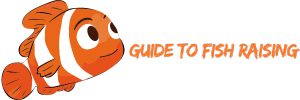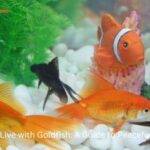What Fish Can Go in a 1 Gallon tank? A 1-gallon tank is one of the smallest sizes available for fishkeeping and presents unique challenges for maintaining a healthy and stable environment for fish. The limited space and water volume restrict the types and number of fish that can thrive in such a confined habitat.
However, with careful planning and the right choices, it is possible to create a suitable home for certain small fish species and invertebrates. This article Guide to Fish Raising explores the best options for stocking a 1-gallon tank and provides tips for maintaining a healthy mini-aquarium.
Table of contents
ToggleUnderstanding the Limitations of a 1-Gallon Tank
Before delving into specific fish species, it is crucial to understand the limitations of a 1-gallon tank. The small size poses several challenges:
- Limited Space: The small volume restricts the swimming space for fish, making it unsuitable for most species that require more room to move and grow.
- Water Quality: Maintaining stable water parameters in such a small tank can be difficult. Ammonia, nitrites, and nitrates can quickly reach harmful levels without proper filtration and regular maintenance. In a 1-gallon tank, even small amounts of waste can lead to significant water quality issues, making frequent water changes essential.
- Heating and Filtration: Many standard aquarium heaters and filters are designed for larger tanks. Finding suitable equipment for a 1-gallon tank can be challenging. Proper heating is crucial for tropical fish, as temperature fluctuations can cause stress and illness. Similarly, filtration must be adequate to handle waste without creating strong currents that can overwhelm small tank inhabitants.
- Behavioral Stress: Fish kept in confined spaces can experience stress, which may lead to health issues and shortened lifespans. Limited space can prevent fish from exhibiting natural behaviors, such as hiding, exploring, and socializing, leading to increased aggression or lethargy.
What Fish Can Go in a 1 Gallon tank
Given the limitations of a 1-gallon tank, it’s crucial to select fish that can cope with confined spaces, have low bioloads, and are easy to care for. Here are some options that can adapt to such a small environment with diligent care and proper maintenance:
Betta Fish (Betta splendens)
Betta fish are a popular choice for small tanks due to their adaptability and hardiness. However, while a 1-gallon tank can suffice temporarily, it’s not ideal for their long-term health.
Requirements:
- Temperature: Bettas require a stable temperature of 78-80°F, so a heater is essential.
- Filtration: A gentle filter helps maintain water quality.
- Maintenance: Regular water changes are crucial to keep the water clean.
Considerations:
- Bettas can survive in small tanks, but they thrive in larger environments. Upgrading to a tank of at least 2.5 gallons is highly recommended for their well-being.
- Bettas are labyrinth fish, meaning they can breathe atmospheric air, which makes them somewhat tolerant of lower oxygen levels in smaller tanks.
Endler’s Livebearers (Poecilia wingei)
Endler’s livebearers are small, colorful fish that can adapt to a 1-gallon tank if kept in very small numbers.
Requirements:
- Temperature: They prefer a range of 72-82°F.
- Environment: Clean, well-maintained water with regular changes and a small filter.
- Feeding: They thrive on a diet of flake food, small pellets, and occasional live or frozen foods.
Considerations:
- Endler’s livebearers are active swimmers and social fish. In a 1-gallon tank, it’s best to limit the number to one or two fish to prevent overcrowding.
- They reproduce quickly, so keeping only males or monitoring the population is essential.
Celestial Pearl Danios (Danio margaritatus)

Also known as galaxy rasboras, these tiny fish are an option for small tanks due to their small size and peaceful nature.
Requirements:
- Temperature: They thrive in temperatures between 72-78°F.
- Environment: A planted tank with hiding spots and a gentle filter.
- Maintenance: Regular water changes are essential to maintain water quality.
Considerations:
- Celestial pearl danios are schooling fish and do best in groups of six or more. Therefore, they are better suited for larger tanks, but a single fish can be kept in a 1-gallon tank with careful monitoring.
- They are shy and prefer a well-planted environment to feel secure.
Pygmy Corydoras (Corydoras pygmaeus)
Pygmy corydoras are small, bottom-dwelling fish that can adapt to small tanks with proper care.
Requirements:
- Temperature: They need a range of 72-78°F.
- Substrate: A substrate that is gentle on their barbels is essential.
- Filtration: A small filter and regular water changes are necessary.
Considerations:
- Like celestial pearl danios, pygmy corydoras are social fish that thrive in groups. A single fish can be kept in a 1-gallon tank, but a larger tank is preferable to accommodate a small school.
- They are active and benefit from having some hiding spots and gentle currents.
Invertebrate Options for a 1-Gallon Tank
In addition to small fish, certain invertebrates can thrive in a 1-gallon tank. These creatures often have lower bioloads and can contribute to the tank’s ecosystem by scavenging and helping to keep it clean. Here are some suitable invertebrate options for a 1-gallon tank:
Cherry Shrimp (Neocaridina davidi)
Cherry shrimp are colorful and hardy invertebrates that do well in small tanks. They are popular among aquarium enthusiasts for their vibrant red color and active behavior.
Requirements: Cherry shrimp prefer temperatures between 65-80°F and slightly acidic to neutral water (pH 6.5-7.5). A sponge filter is recommended to avoid harming the shrimp with strong currents, and regular water changes help maintain water quality.
Considerations: Cherry shrimp reproduce quickly, so it’s important to monitor their population. They also benefit from a planted tank with plenty of hiding spots, as plants provide both shelter and additional surfaces for biofilm, which is a natural food source for shrimp. Feeding them a balanced diet of algae wafers, shrimp pellets, and blanched vegetables will ensure they receive proper nutrition.
Nerite Snails (Neritina natalensis)
Nerite snails are excellent algae eaters and can thrive in small tanks. They come in various patterns and colors, adding aesthetic appeal to the aquarium.
Requirements: Nerite snails need a temperature range of 72-78°F and slightly alkaline water (pH 7.5-8.5). They also require calcium in their diet to maintain their shells, which can be provided through specialized snail food or supplements.
Considerations: Nerite snails cannot reproduce in freshwater, so there is no risk of overpopulation. However, they can be sensitive to poor water quality, so regular maintenance is crucial. Providing them with a consistent food source, such as algae wafers, will help keep them healthy and active.
Marimo Moss Balls (Aegagropila linnaei)
While not an animal, marimo moss balls are a unique and easy-to-care-for addition to small tanks. They are actually a form of algae that grows into green, velvety spheres.
Requirements: Marimo moss balls thrive in temperatures between 72-78°F and prefer low to moderate light. They are very low maintenance, requiring only occasional cleaning and rotation to ensure even growth. Simply rinse them in tank water during water changes to remove debris.
Considerations: Marimo moss balls can help absorb nitrates and improve water quality, making them a beneficial addition to any small tank. They are also an excellent natural decoration, adding a touch of greenery to the aquarium. Additionally, they can provide some enrichment for shrimp and snails, which may graze on their surface.
Tips for Maintaining a 1-Gallon Tank
Maintaining a healthy environment in a 1-gallon tank requires diligence and attention to detail. Here are some additional tips to help you succeed:
Choose the Right Equipment
Select a small, adjustable heater and a gentle filter suitable for a 1-gallon tank. Sponge filters are often a good choice as they provide filtration without creating strong currents that can overwhelm small tank inhabitants.
Perform Regular Water Changes
Due to the small volume, water quality can deteriorate quickly. Perform 25-50% water changes weekly to keep ammonia, nitrites, and nitrates in check. Use a water conditioner to remove chlorine and chloramines from tap water.
Monitor Water Parameters
Regularly test the water for pH, ammonia, nitrite, and nitrate levels. Keeping these parameters stable is crucial for the health of your tank inhabitants. In such a small tank, even minor fluctuations can have significant effects on the occupants.
Avoid Overfeeding
Overfeeding can quickly foul the water in a small tank. Feed small amounts once or twice daily and remove any uneaten food after a few minutes to prevent it from decomposing and affecting water quality. This is especially important for invertebrates, which can be more sensitive to poor water conditions.
Provide Hiding Spots
Even in a small tank, it’s important to provide hiding spots for your fish or invertebrates. Plants, rocks, and small decorations can offer shelter and reduce stress. Invertebrates like shrimp and snails especially appreciate having places to hide and explore.
Be Mindful of Stocking Levels
Avoid overcrowding the tank. Stick to one or two small fish or a few invertebrates to ensure there is enough space and resources for all inhabitants. Overcrowding can lead to stress, aggression, and poor water quality.
Keep the Tank Clean
Regularly clean the tank, including the substrate, decorations, and filter. Use a small gravel vacuum to remove debris from the substrate without disturbing the tank inhabitants. Keeping the tank clean will help maintain stable water conditions and promote the health of your invertebrates.
Conclusion
While a 1-gallon tank is not ideal for most fish, there are a few species and invertebrates that can adapt to this small environment with proper care. Betta fish, Endler’s livebearers, celestial pearl danios, and pygmy corydoras are some of the options that can live in a 1-gallon tank, albeit with limitations. Invertebrates like cherry shrimp and nerite snails are also suitable and can help maintain the tank’s ecosystem.
Maintaining a healthy 1-gallon tank requires careful attention to water quality, regular maintenance, and appropriate stocking levels. By following the tips and guidelines outlined in this article, you can create a thriving mini-aquarium and provide a suitable home for your aquatic pets.





